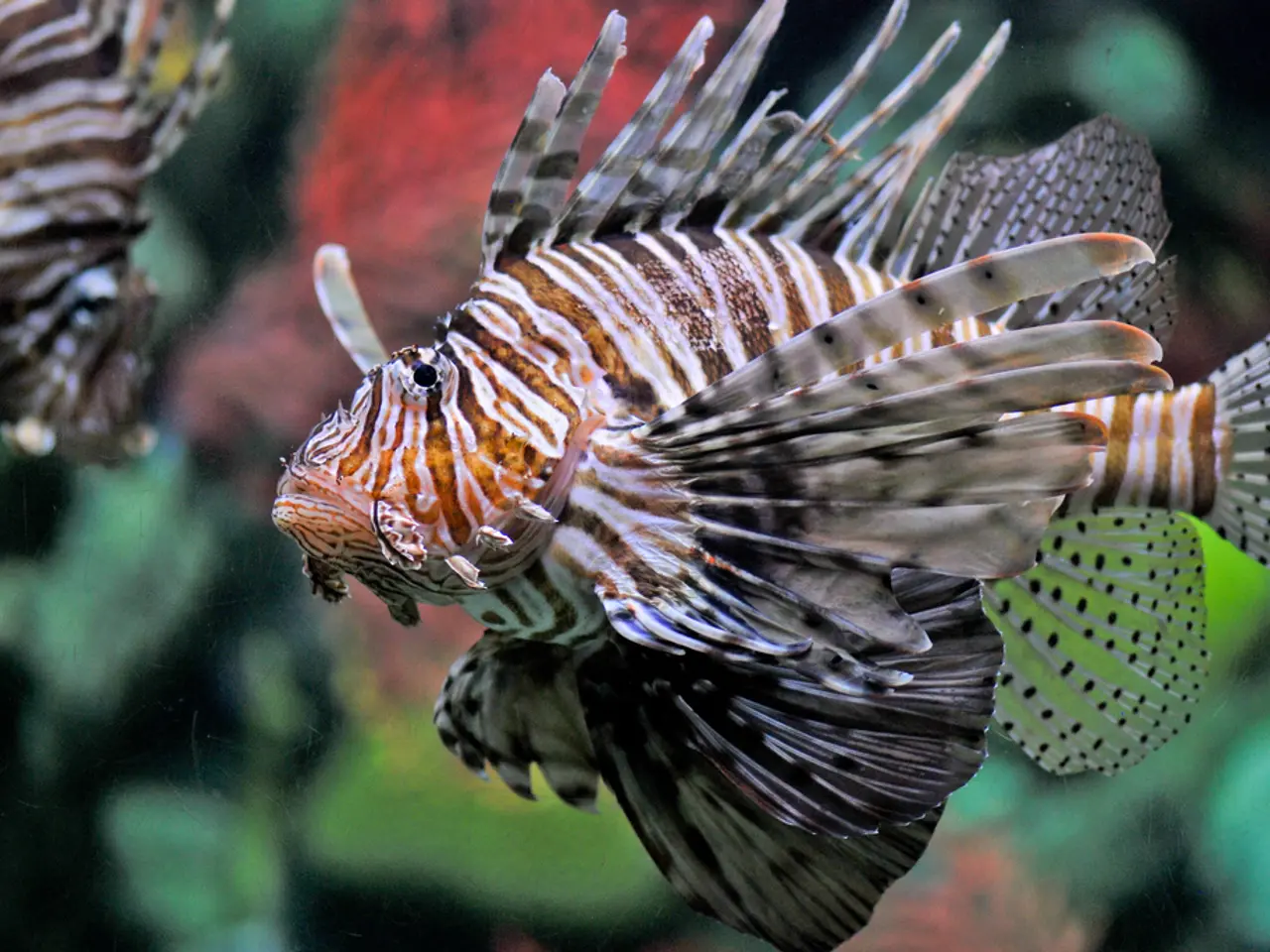Study Spotlight: Delicious and Pink, a Certain Sea Urchin Species Could Serve as a Climate-Resilient Food Alternative
In the face of changing climatic conditions, the impacts of which are becoming increasingly pronounced, identifying and facilitating potential climate-tolerant fisheries is becoming increasingly important. One such potential fishery is the pink sea urchin, a hardier species that thrives under conditions that are challenging for many other species.
The pink sea urchin, scientifically known as Strongylocentrotus fragilis, is currently experiencing a surge in population throughout Southern California, even as other sea urchin species struggle with variable environmental conditions. This was observed by Okinawa Institute of Science and Technology researcher Kirk Sato in his PhD research.
The pink sea urchin is hardier than its red cousins, thriving at greater depths, lower oxygen levels, and higher acidity levels than other urchin species. This makes it an attractive alternative to the large red sea urchin (Mesocentrotus franciscanus), which is vulnerable to increased water temperatures, ocean acidification, and hypoxia.
Researchers Maria García, Thomas Müller, and Elena Rossi conducted a study on the potential of a replacement sea urchin fishery using the pink sea urchin. They found that while the pink sea urchin roe shows promise in quality and taste, commercial exploitation is feasible only with careful population management to prevent overharvesting.
According to the study, the density, timing, and location of the pink urchins looked promising to support a viable fishery. The new study found that the pink urchin species is most abundant at a depth of 250 to 300 meters (820 to 984 feet), similar depths where spot prawn fishers set their traps, and that winter is the primary time when the urchins produce edible roe.
If a culinary market develops for the pink sea urchin, allowing spot prawn fishermen to keep and sell them as bycatch could be an easier solution. However, it's currently legal for urchin divers to harvest pink urchins, but it's not practical due to their deeper living habitats and lack of proven market.
If the red sea urchin fishery continues to struggle, the pink sea urchin could be a good fallback or supplemental fishery to help shore up the red urchin. The fishery saw unprecedented reductions in marketable wild-caught urchins after the 2014 warm blob and 2015 El Niño, which decimated kelp forests.
Establishing a new fishery for the pink sea urchin requires state and local agencies to approve and establish regulations. Processing trials and taste tests would be needed for the pink sea urchin. The pink sea urchin roe on average weighs 80% less than the red sea urchin roe, which could present challenges in terms of market demand and pricing.
However, with careful management and research, the pink sea urchin could provide a valuable alternative to the struggling red sea urchin fishery, helping to sustain the livelihoods of fishermen and the seafood industry in Southern California.
Read also:
- Peptide YY (PYY): Exploring its Role in Appetite Suppression, Intestinal Health, and Cognitive Links
- Toddler Health: Rotavirus Signs, Origins, and Potential Complications
- Digestive issues and heart discomfort: Root causes and associated health conditions
- House Infernos: Deadly Hazards Surpassing the Flames




